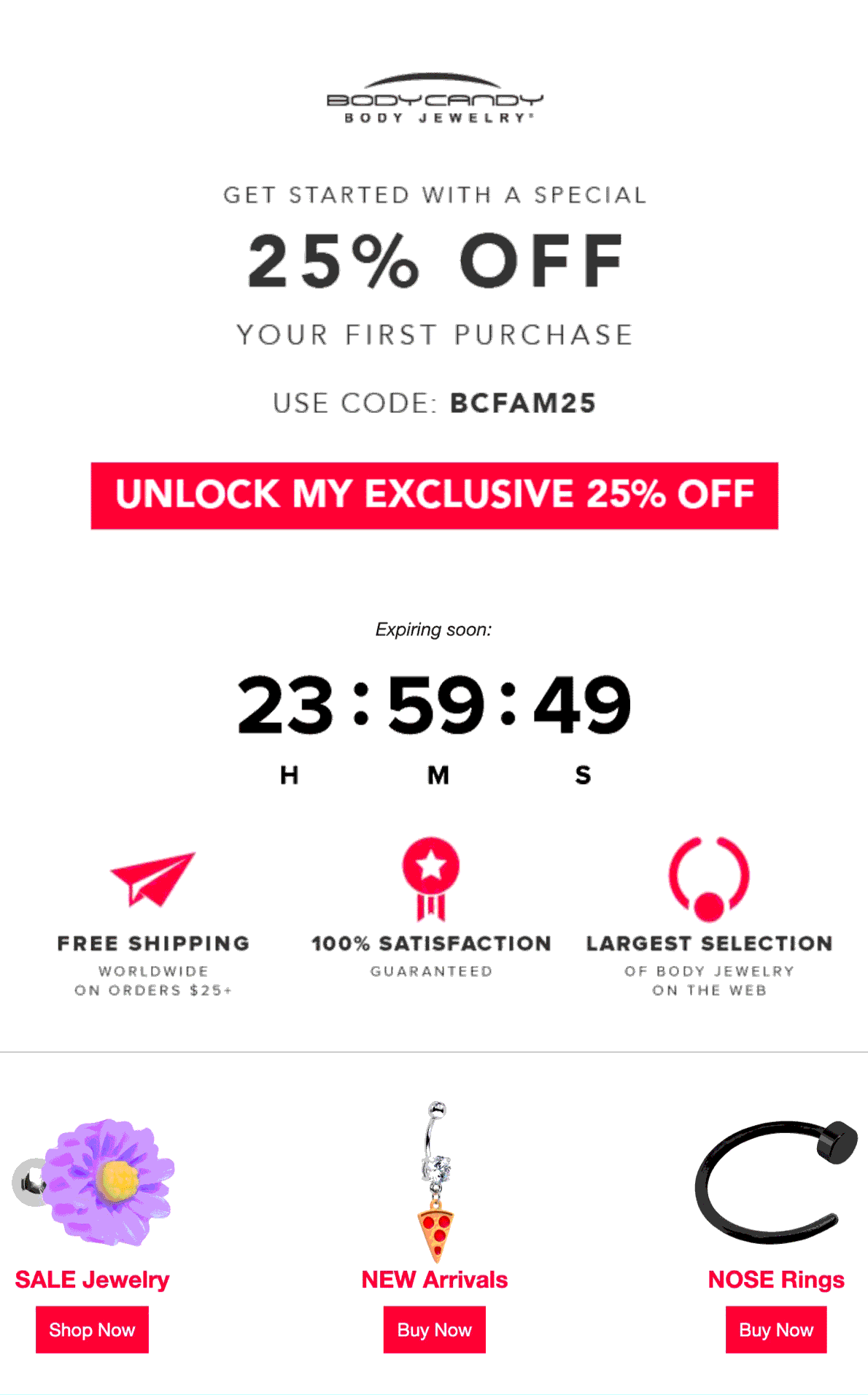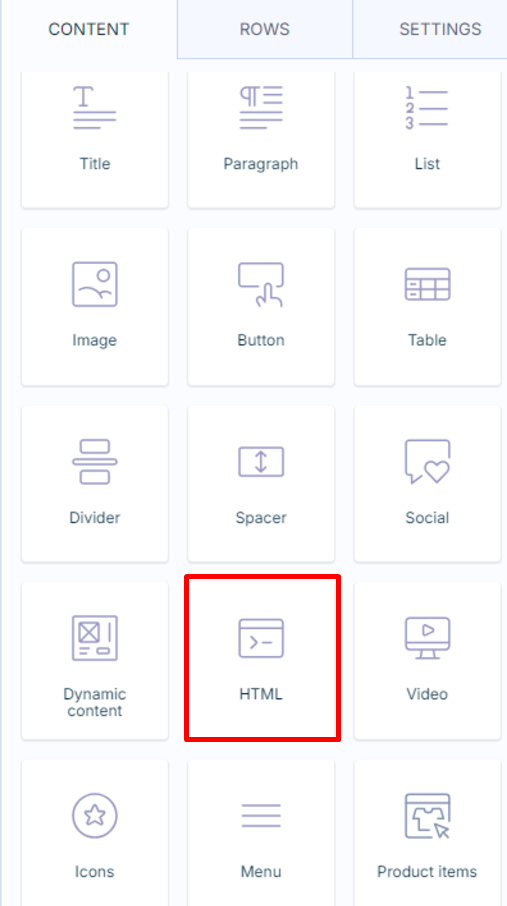Boost Email Engagement with Static & Dynamic Countdowns
Discover 7 examples when static & dynamic email countdowns are relevant in e-commerce email marketing
About the Author:
Co-founder of Datacop, agency that fulfils marketing operation roles in large eCommerce companies such as OluKai, Melin, Roark, Visual Comfort and Company, Dedoles and others.
Email marketers compete for the very limited attention of their subscribers. It is hard to estimate the exact number, but it is safe to expect that the average subscriber receives 10s, if not 100+, marketing emails per week. According to Litmus, the average amount of time customers spend reading emails was 9 seconds in 2022.
One way email marketers can effectively capture the attention of their subscribers is through “Animated Countdowns in Emails.” Countdown timers provide a way to create a sense of urgency, making the customer more likely to remember the email's message and act on its call to action. According to a survey study by Sharethrough, viewers of ads were 43% more likely to remember when a promotion starts if a countdown was present in the ad.
If placed in the right touchpoint, an animated timer in email campaigns can drive extra clicks and conversions. Of course, if you are not sure about the added value of the countdown, we would recommend A/B testing it. Countdowns are not suitable for every email campaign or automation.
In this article, we are going to discuss 7 examples where static & dynamic countdown timers can be used to drive increased engagement and how to implement them using Sendtric. Hopefully, these examples will inspire you to think about your own email campaigns and automated flows and consider where it may be relevant for your brand to include countdowns.
3x Static Countdown Examples
Animated Static Countdown Timers are static in the sense that they refer to a global timer that is the same for all customers. Here are three examples where we have found that static countdowns in email campaigns can drive results:
Countdown to the Ending of Discount Sales and Special Occasions
For time-limited discount sale events such as Black Friday, Cyber Monday, Spring/Summer Sale, Autumn/Winter Sale, Christmas Sales, Valentine’s Day, Back to School, etc., we have often seen brands use countdowns in the email campaigns. These are often used for best effect, say 24 / 48 hours before the end of the sale.
Countdown to the Start of Events / Webinars
This one is quite specific to brands and their vertical. Sometimes e-commerce brands organise online or offline events for their subscribers, potential customers, or the top 10% of their B2B customers. Email campaigns promoting these events often include countdowns to the end of ticket sales for the events, as well as in campaigns hyping the events up, counting down to when the events start.
Countdown to the End of Early Access to Product Launches + (Web)
This one is common in Fashion. Sometimes brands offer early access for subscribers / existing customers to new product launches, 2 - 3 days ahead of launching to the “general public”. Email campaigns promoting this early access benefit for subscribers often include countdowns to when the early access phase of the product launch ends.
With Bloomreach Engagement, it would be possible to also personalise the website experience of subscribers so that only they would see the new products a few days ahead of everyone else. In that case, we would recommend also highlighting those early access new products with a countdown to the expiration of the early access, driving urgency to browse and purchase now.
4x Dynamic Email Countdown Examples
Animated Dynamic Countdown Timers are dynamic in the sense that they are dynamic from the moment of the email trigger per customer. Here are four examples where we have found that dynamic countdowns in email campaigns can drive results:
Countdown to the Expiration of Abandoned Cart / Checkout
If your e-shop expires products in the cart, consider adding a dynamic countdown to the cart expiry to the Abandoned Cart / Checkout automation. We recommend that most brands consider A/B testing this tactic, as even a modest statistically significant percentage uplift in revenue could yield interesting results, as this automation is often one of the top three automated revenue drivers for many clients. This tactic is more relevant for brands that cater to impulse-based shoppers, such as those in the Fashion or Toys verticals.
Countdown to the Birthday of a Friend / Relative
If an e-shop collects the birthday dates of their customers’ friends/relatives, consider triggering an automated email 7 days or 14 days ahead of the birthday of the customer’s friends/relatives to remind the customer to buy a gift and showcase some products relevant to the friend/relative.
These kinds of automations are relevant for brands that offer a lot of “Gifting” products where the customer does not buy for themselves, but for someone they know. A countdown, perhaps with seconds, is also sometimes implemented in these reminders.
The same tactic can be implemented for birthday emails on the customer’s actual birthdays. However, the context of the email campaign should take into account the fact that the customer is likely not in need of a reminder about their own birthday.
Countdown to the Expiration of a Welcome Coupon + (Web)
If your e-shop offers welcome coupon discounts that expire after a certain period, such as 30 days, consider implementing a dynamic countdown in the email campaign where the discount is offered to the customer. Additionally, we would recommend extending the experience to the website. If the customer returns to the site but has not yet used the welcome discount, use a banner or part of the website to remind customers of their unused welcome coupon, accompanied by a dynamic countdown to drive urgency.
Typically, between 40% to 60% of users who receive the discount coupon welcome email also visit the website within the next 30 days. So there is a fair number of users who visit the website and still don’t use the discount code after receiving it. For more details, read our “Omnichannel Welcome Discount” substack article from earlier this year:
Countdown to Expiration of Loyalty Programme Points + (Web)
If your e-shop offers a Loyalty Programme with an “Earning Points” mechanism, where each $/€ is converted into a point that the customer can then spend on discounted purchases or selected products, then this may be relevant for you.
If the earned loyalty points expire after 365 days (or another duration) then we would recommend to trigger an email 10 days ahead of the expiry of the loyalty points from each purchase of the customer and include a dynamic countdown timing how much time the points are still valid and the how much points are about to expire.
Implementing Email Countdowns
Implementing a static countdown is straightforward. Countdown timers are essentially images created and hosted by platforms like Sendtric.
In such a platform, a user would select the static timestamp towards which the timer counts down. Additionally, at this stage, it would be possible to change the design of the timer. This enables you to edit the timer to fit the design of your email campaign and brand. These are all the things that can be changed about the design out of the box in Sendtric:
size of digits, font of digits of the timer
precise wording of labels (i.e. ‘Days’ / ‘ Hours’ / etc.
which labels to include/exclude in the timer
is the timer horizontal or vertical
color of digits, color of the background of the timer
possible to upload a background image for the timer
Once the Time and Design of the countdown timer are created, the platform generates a link/HTML code for the user, which refers to the image source of the countdown timer. This link/HTML needs to be inserted into the HTML of the email. If you are building your email creative with a “Visual builder” tool, then usually there is an “HTML Block” available where the code needs to be placed to insert the countdown in an email campaign.
<table align="center">
<tbody>
<tr>
<td><img src="https://gen.sendtric.com/countdown/example_id" style="display: block;max-width:100%;" /></td>
</tr>
</tbody>
</table>Implementing a dynamic countdown is a bit more complicated. Firstly, it is not available with all Countdown timer providers, although we know that Sendtric provides the capability to generate a dynamic countdown timer as a paid feature (“Sendtric Power”)
Secondly, unlike a static timer, one cannot define the time to which it is counting in the Sendtric platform itself. A dynamic countdown requires a simple Jinja to be inserted directly into the HTML of the image source URL, as can be seen in the screenshot below.
As you can see, implementing the dynamic countdown requires a Jinja reference of the ESP platform for the current timestamp (of when the email is triggered) and also the number of seconds, in addition to the current time. So, for example, if a Checkout expires after 24 hours, it would be as “{{ time }}+86400”. If it were, for example, an expiration of a Welcome Discount Coupon after 30 days, it would be “{{ time }}+2592000”.
Different ESPs have different syntax for their Jinja reference for time. In Bloomreach Engagement, the syntax for the current timestamp is {{ time }}. Follow these links for instructions on how to implement the Dynamic Countdown in Mailchimp and Iterable and what their respective syntaxes for current timestamps are.
If you found this post valuable…
We hope this article was valuable to you. If you enjoyed it, don’t miss out on future articles—subscribe for free and have our latest content delivered straight to your inbox.
If you'd like to discuss any aspects of your eCommerce marketing operations with us or explore potential collaboration, feel free to schedule a meeting using the link below:









